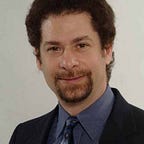US Social Fragmentation
Alfredo J. Morales and Yaneer Bar-Yam
New England Complex Systems Institute and MIT Media Laboratory Cambridge, MA, 02139
Increasing polarization, even fragmentation, of society is becoming apparent in US politics. There is a sense that society is separating into parts, each of which is listening only to other members of that group. The separation between groups can enable them to deviate even further in values and perspectives. Here we investigate social fragmentation by analysis of where people travel — and the boundaries they choose not to cross — using travel information about individuals obtained from Twitter data.
As individuals travel for personal or business reasons, they show us which areas are connected socially. Studying the network of connections is a powerful way to determine separation into groups and the natural breakpoints between them [1]. Figure 1 shows A) the density of Twitter activity that is centered in cities, B) areas that are the domains of individual cities extended into the suburban and rural areas that are linked to them and C) larger areas of the US that are separated by boundaries that have less travel across them. While these urban areas have been identified previously [2], the larger domains between the urban and national scale may be the important domains of social fragmentation.
There are 20 such areas (Figure 1 C). Similar patterns have been detected by analyzing mobile phone calls [3]. Some areas represent single states, like Florida, Texas or Michigan. Other areas comprise multiple states. New England is mostly a single area, and so are the Carolinas or Georgia and Alabama.
Washington, Oregon, Montana and most of Idaho together form a large area that spans the northwest of the US. This region borders two other large regions, one of which includes southern Idaho, Utah, Wyoming and Colorado, and the other one includes Minnesota, Iowa, eastern Wisconsin and both Dakotas. Below the latter, Oklahoma is combined with Kansas. Missouri and southern Illinois are a separate region.
Northern Illinois is combined with Wisconsin and northern Indiana in a region that includes the west coast of Lake Michigan. The rest of Indiana is combined with Kentucky and Tennessee in a midwestern region that borders with a southern region comprised by Louisiana, Mississippi, Arkansas and parts of southwest Tennessee. Ohio is connected to West Virgina and western Pennsylvania.
Washington DC is integrated with Maryland and Virginia. New York city is combined with much of New Jersey, Delaware and eastern Pennsylvania, while upstate New York is a separate region connected to northwest Pennsylvania.
Southern California, including Los Angeles, is separate from
northern California, including San Francisco. Nevada is split between these two regions. Next to it, Arizona and New Mexico are combined in a southwest region that is linked to areas of Mexico.
Our analysis suggests that the US fragmentation should not be viewed as just forming two groups, often called red/blue aligning with right and Republican versus left and Democratic [4]. Instead there appear to be approximately 20 groups reflecting the selectiveness of social interactions.
[1] A. J. Morales et al. Characterizing ethnic interactions from human communication patterns in Ivory Coast.” Networks and Heterogeneous Media 10(1): 87–99 (2015).
[2] N. Dash and A. Rae, An Economic Geography of the United States: From Commutes to Megaregions, PLoS ONE 11(11): e0166083. doi:10.1371/journal.pone.0166083 (2016).
[3] F. Calabrese et al. “The Connected States of America: Quantifying Social Radii of Influence.” The Third IEEE International Conference on Social Computing (SocialCom 2011) (2011).
[4] E. Bakshy et al. Exposure to ideologically diverse news and opinion on Facebook, Science 348(6239): 1130–1132 (2015).
